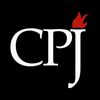By Jessica Jerreat
In the past week, North Korea has allowed some Western journalists into the country to report on its military parade, and government officials have given a handful of rare interviews to international media outlets including The Associated Press, BBC, and Al-Jazeera as tensions escalated with the United States.
But this brief flurry of engagement should not be misinterpreted: North Korea remains one of the most heavily censored countries in the world. Supreme leader Kim Jong Un retains an absolute grip on the flow of public information. All media is state-owned, with the official Central Korean News Agency serving as a government mouthpiece, and the regime metes out harsh punishments for anyone accused of accessing uncensored information or sharing news from countries that it considers its enemies. Its own journalists remain strident propagandists, and advances in technology that could open up channels to independent news are fought with ever-stricter censorship and surveillance measures.
The AP maintains a permanent presence in the country, with a small team of international correspondents and photographers, and a few North Koreans who work primarily as fixers. Eric Talmadge, who has led the bureau since 2013, likens working in Pyongyang to being embedded with the military. “Obviously the context is quite different,” he said. “But in practical and psychological terms, I find it very similar to my experiences embedded in Afghanistan and Iraq.”
The freedoms granted to the AP reporters are denied to would-be journalists from inside the country, said Kang Cheol Hwan, president of the North Korea Strategy Center. “Journalism in North Korea is run by the state,” Kang said.
Jean H. Lee, a former AP reporter who opened its Pyongyang bureau and is now a global fellow at the Washington, D.C.–based Wilson Center, said North Korean citizens rarely have access to a daily newspaper, and lack adequate electricity to watch television at home. Instead, most read copies of papers posted on news boards across the city or watch TV in public areas such as Pyongyang’s main train station, said Lee, who also teaches a class on North Korean media studies at Yonsei University in South Korea.
Kang said the party elite has access to a secretive newspaper, Chango Sinmun (“Reference Newspaper”), with stories from Voice of America, Russia’s TASS agency, China’s state-run Xinhua, and NHK in Japan. The average citizen who wants uncensored news either illegally tunes into foreign radio or relies on word of mouth, Kang said.
Advances in communications technology are mitigated by official steps to censor. Lee said the regime’s elite can access news via the country’s intranet. But access to the internet is highly restricted, with only North Koreans who have a specific task, such as monitoring coverage, granted permission, she said.
In keeping with Kim’s efforts to appear that he is at the forefront of technology, North Korea has developed its own smartphones, tablets, and software, including Red Star 3.0, an operating system that mimics iOS, Kang said. “Ultimately, these products were carefully designed to control and monitor information,” he said. Red Star 3.0 has surveillance capabilities, and the interface of the intranet, Kwangmyong, is set up to give the impression that the user has full internet access. An analysis of Red Star’s capabilities by the tech-focused outlet Fast Company found that its approximately 5,000 web pages mostly contain propaganda. Kang added that the country’s Arirang smartphone “looks, feels and uses like a Samsung . . . but lacks the very component that makes a smartphone a smartphone” such as Wi-Fi, Bluetooth, and an internet browser.
When researchers from the German security company ERNW studied Red Star 3.0, they found it contained sophisticated surveillance properties, Reuters reported. This capability is particularly concerning since citizens trade flash drives to access news. The North Korean Strategy Center is among the groups distributing flash drives in an effort to combat censorship. Kang said the content typically includes PDFs of South Korean newspapers, Wikipedia pages translated into the North Korean dialect, guides on how to run businesses, radio programs, and TV shows and films, including some about the foundations of democracy such as “Lincoln.”
The use of cell phones has been rising in North Korea thanks to a black market and porous border with China, but the general population is barred from making and receiving international calls, Lee said. The Daily NK reported in March 2014 that North Korea had added new clauses to Article 60 of the penal code—“attempts to overthrow the state”—which include a minimum penalty of five years of “re-education” in a prison camp and a maximum penalty of death for communicating with the outside world, including through cell phone contact. Watching South Korean media or listening to foreign radio can result in 10 years of “re-education.”
Even with the availability of censorship work-arounds, Kang said, “Once North Koreans escape and resettle, it’s quite difficult for them to come to terms with the influx of information available to them.”
Jessica Jerreat is senior editor at the Committee to Protect Journalists. She previously edited news for the broadsheet press in the U.K., including for the foreign desk of The Times of London and at The Telegraph. She has a master’s degree in war, propaganda, and society from the University of Kent at Canterbury.
This article is adapted from CPJ’s publication Attacks on the Press: The New Face of Censorship, which will be released on April 25.
